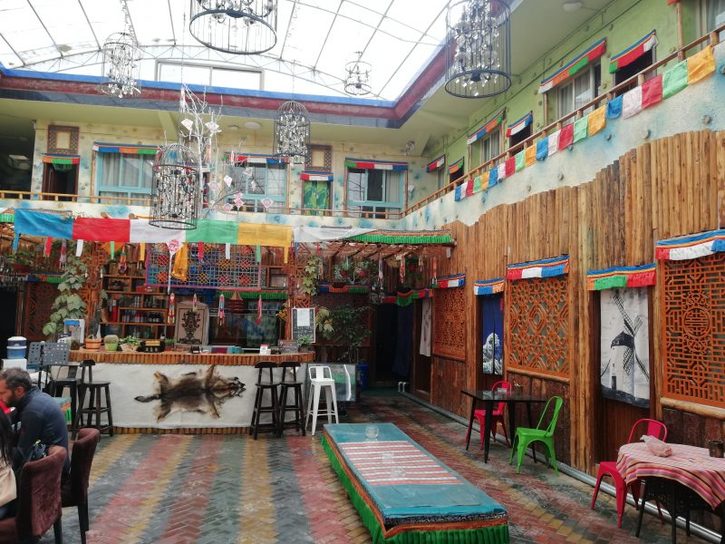A herd of cows visited us in the morning accompanied by some men in Chairman Mao outfits. They were members of the Tu minority ethnic group who are Tibetan Buddhists. We conrinued along the main road to the small town of Datong where we joined a motorway which took us shortly to the capital of Qinghai Province, Xining. It has a population of several million, many of which live in huge tower blocks of perhaps 30-35 storeys high. A short distance out of Xining we arrived at the tourist centre for the Ta’er Si (Kumbum) monastery in the small town of Huangzhong and took a small openair bus to the monastery.
Ta’er is one of the world’s greatest Buddhist monasteries and was built in 1577 on the site of the birthplace of Tsongkhapa, founder of the Gelukpa (Yellow Hat) sect of Buddhism which became the dominant sect after the decline of the Red Hats. Hundreds of monks live at the monastery but they are hard to spot among the millions of tourists from China, Japan and Korea.
The “Grand Hall of Golden Tiles” has a huge chorten which marks the spot where Tsongkhapa was born and pilgrims measure their length outside. The “Yak Butter Scripture Temple” has sculptures of people, animals and landscapes carved out of butter. The “Great Sutra Hall” where sutras are chanted by the monks was also impressive and the “Main Assembly Hall” had a library of sacred Buddhist texts. The “Dammapala Hall” where a monk was beating a gong had stuffed animals in the surrounding galleries to protect it from demons.
A succession of motorways took us round Xining and we passed through a region of mixed minorities who were Moslems or Buddhists. Mosques and temples existed almost side by side. The Huang Po (Yellow River) is still in its infancy but was already impressively wide and looked distinctly yellow. Eventually we turned off along a country road through Tibetan Buddhist territory with every one of the frequent small villages having a temple or stupa. The road was filled with cars, lorries, motor bikes and herds of sheep or yaks. In places it was partly blocked by a landslide or had collapsed into the river below. It climbed gradually over a series of ranges about 3,500 to 3,643 metres high with the passes marked by strings of Tibetan prayer flags. The land consisted of rolling hills of high-altitude grassland with not a tree to be seen and dotted with yurts with brightly-painted designs. I suspect that they were mainly for tourists as there were very few herds of animals. We saw a group of young monk novices playing football in their saffron robes. They had evidently come from the monastery at a nearby village. The houses were typically Tibetan with courtyards enclosed by high walls and containing the house. Eventually we descended down a long pass with many hairpins into the town of Xiahe where the famous Labrang monastery is situated. The hostel is very cheap and not exactly five-star, but is clean and comfortable. We had a nice meal in the nearby restaurant. There are lots of monks here.
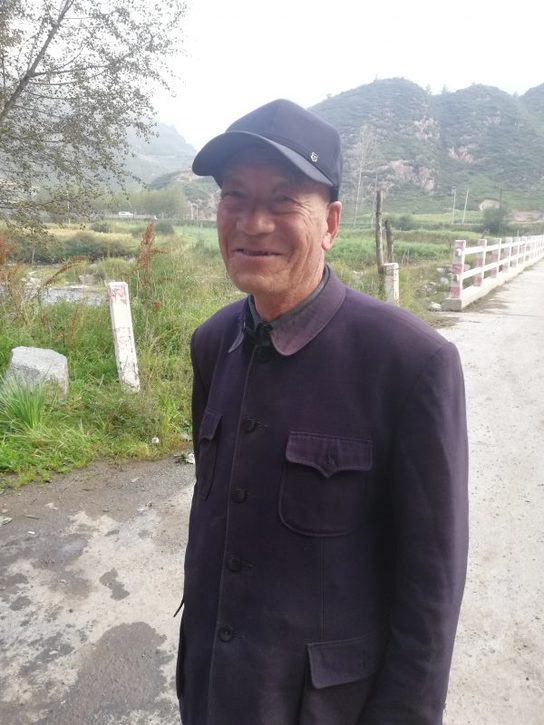
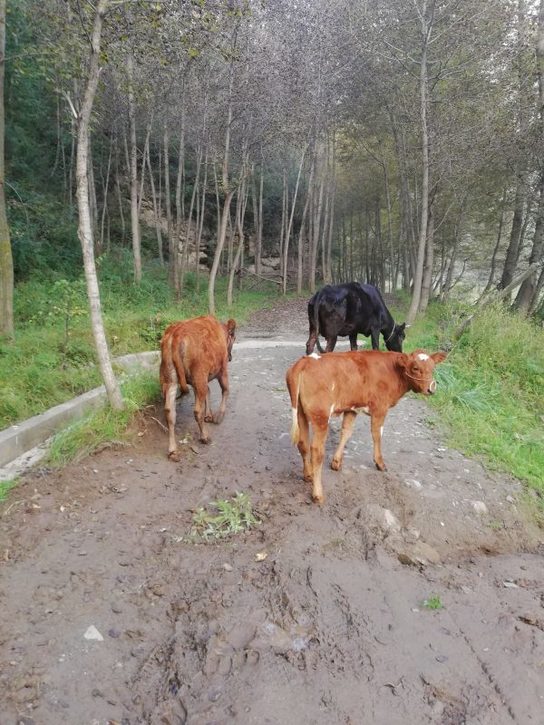
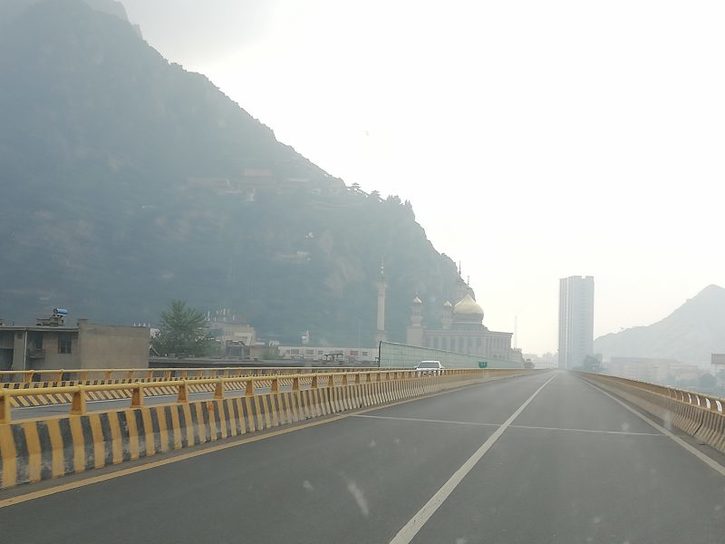
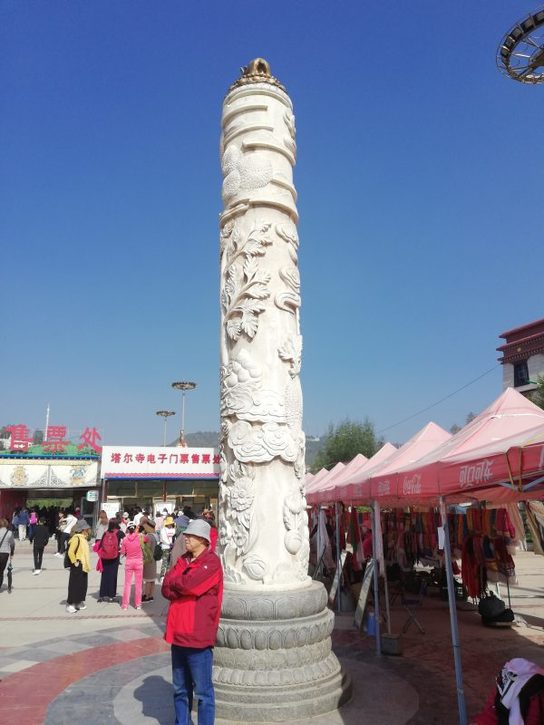
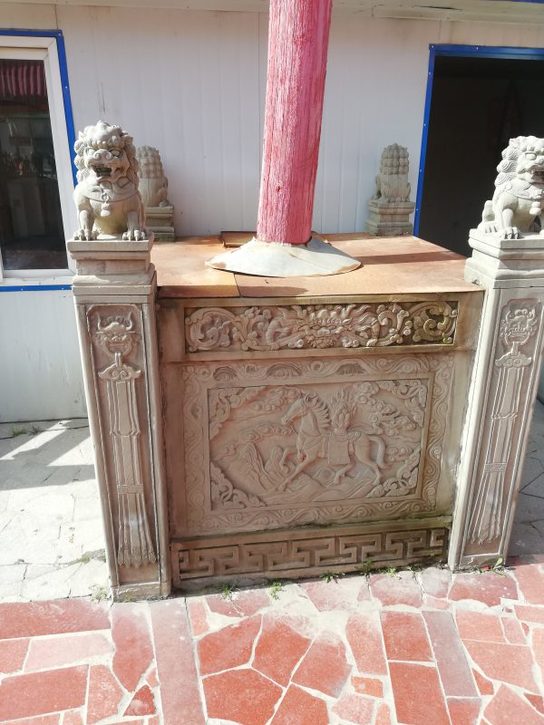
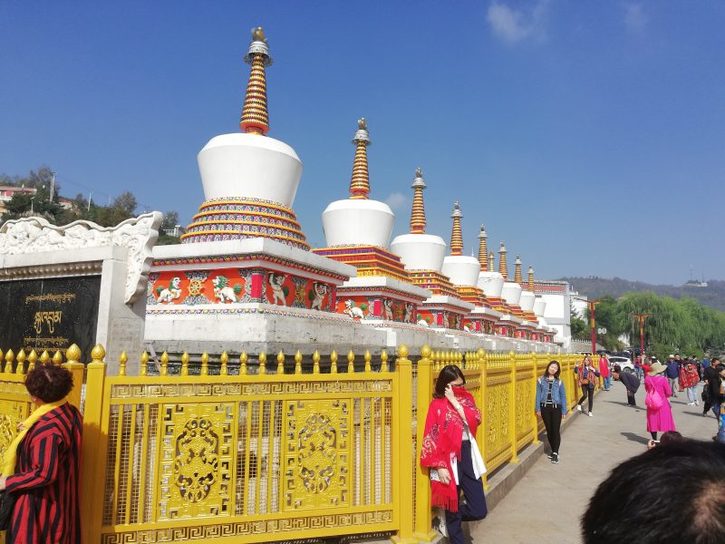
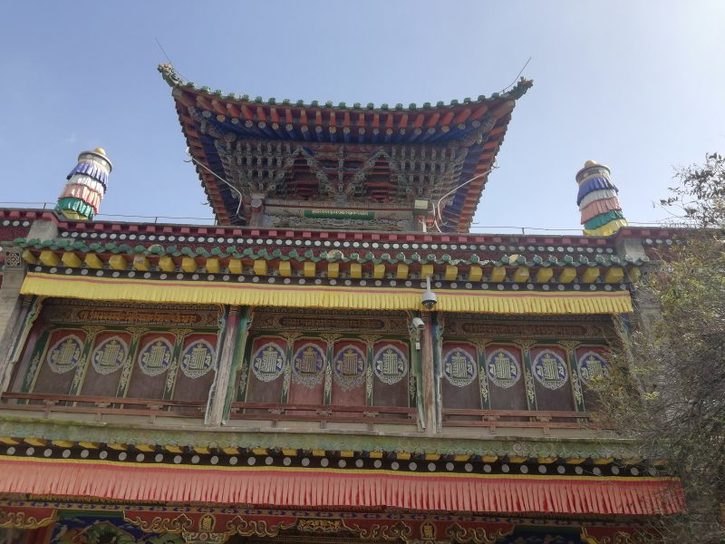
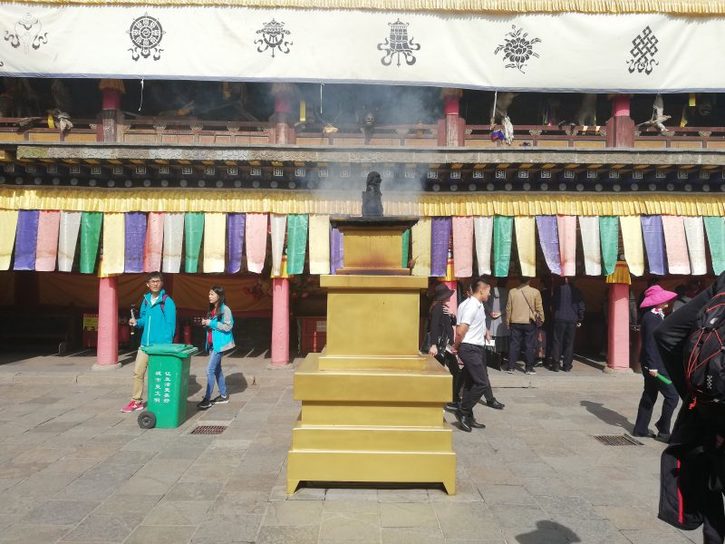
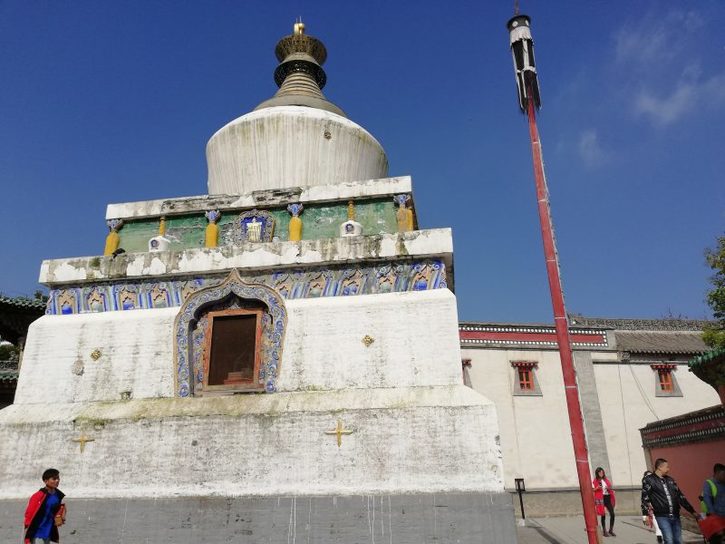
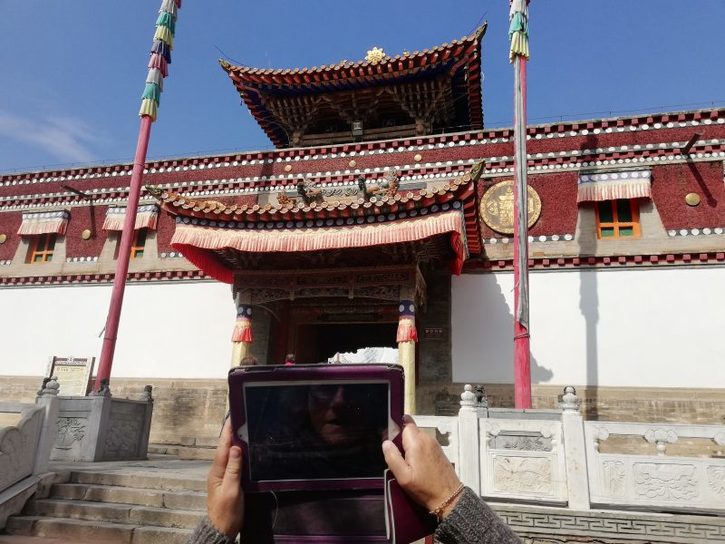
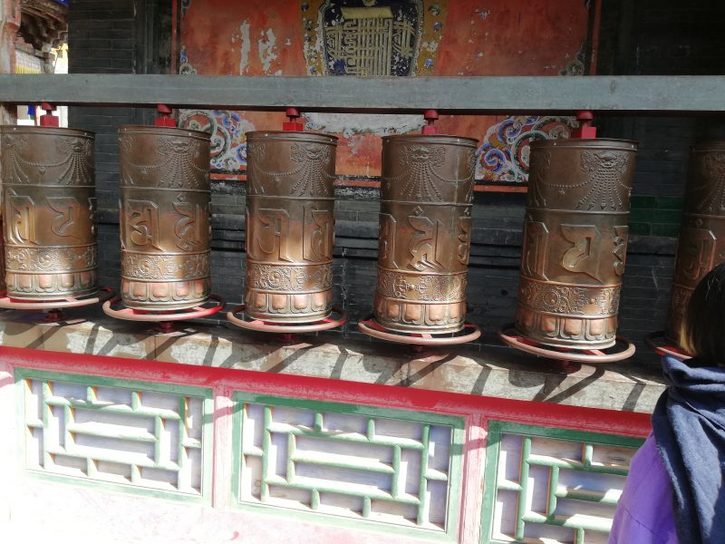
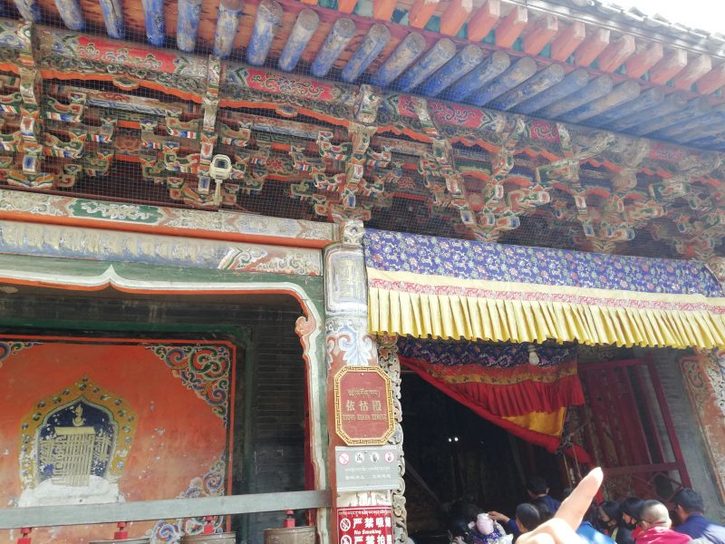
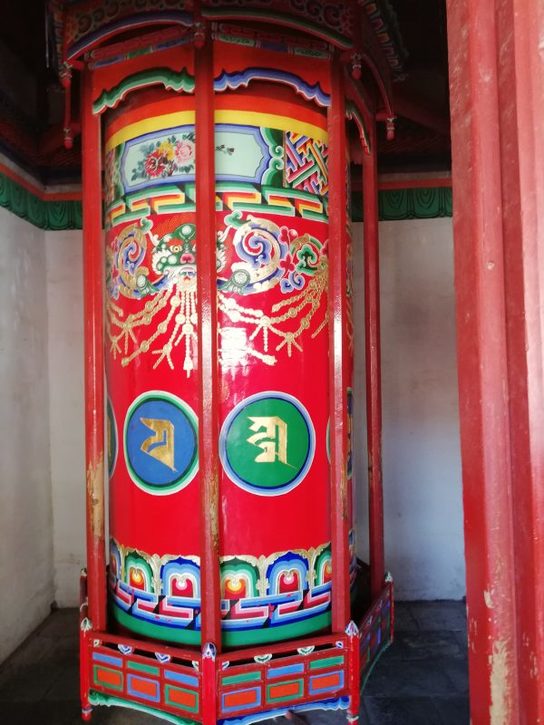
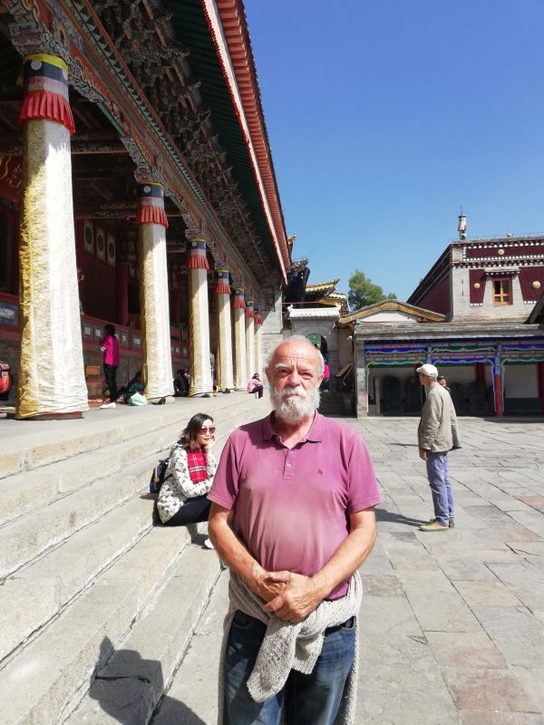
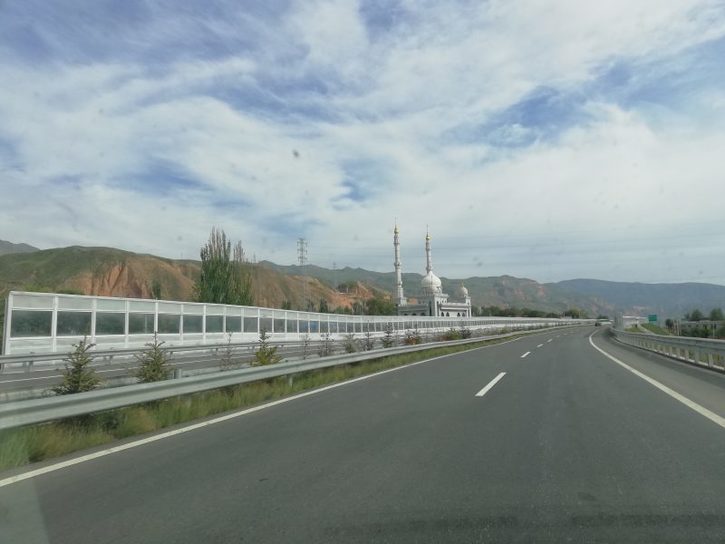
[caption id="attachment_1978" align="alignleft" width="800"]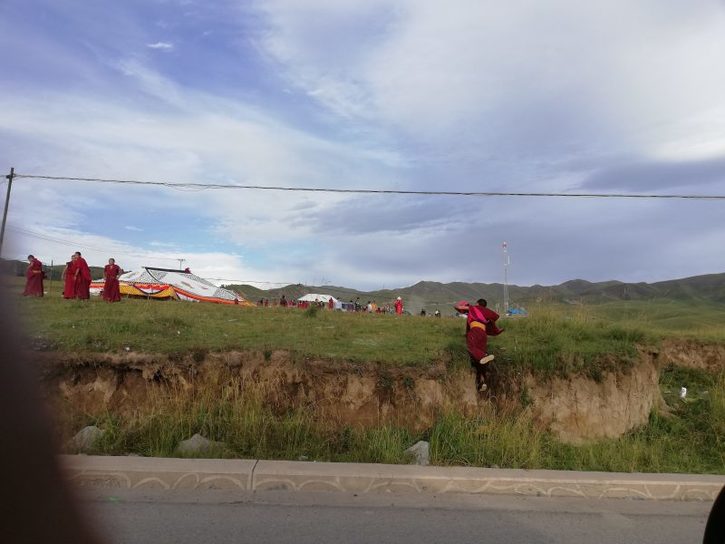 Road to Xiahe
Road to Xiahe
